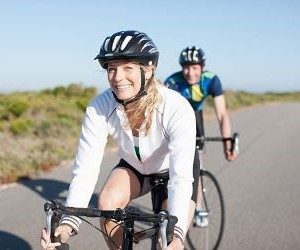HOW DO I PREPARE FOR COLD-WEATHER CYCLING RACES?
Cold-weather cycling races challenge more than just endurance—they test preparation, resilience, and attention to detail. From layering clothing and fueling strategies to handling icy roads, success depends on adapting to winter’s harsh conditions. This article dives into practical methods to optimize gear, adjust training, and maintain peak performance, ensuring that freezing temperatures don’t derail your race goals.

Dressing for success in cold-weather races
Cold-weather cycling is as much about gear as it is about grit. The right clothing choices can make the difference between powering through the race and dropping out due to hypothermia or numb extremities. Layering systems, materials, and fit all matter in keeping warmth without sacrificing performance.
Layering strategies
Effective layering starts with a moisture-wicking base layer to pull sweat away from the skin. A thermal mid-layer adds insulation, while a windproof and water-resistant outer shell protects against the elements. Each layer must be breathable to prevent sweat buildup, which can rapidly chill the body in sub-zero conditions.
Base layer: synthetic or merino wool for moisture management.
Mid-layer: fleece or thermal jersey for warmth.
Outer shell: windproof jacket with ventilation zippers.
Accessories: neck gaiters, thermal caps, and shoe covers.
Protecting extremities
Hands, feet, and ears are the first to suffer in cold races. Insulated gloves, windproof socks, and neoprene overshoes help retain heat. Chemical toe warmers or bar mitts can be lifesavers in extreme cold. Cyclists should test combinations before race day to avoid circulation restrictions that worsen cold exposure.
Balancing warmth and aerodynamics
Staying warm should not come at the expense of speed. Bulky clothing can hinder aerodynamics, but modern cycling apparel uses lightweight thermal fabrics to balance both. Testing gear in training rides ensures confidence and efficiency when conditions get tough.
Training and fueling adjustments for the cold
Cold weather changes how the body burns energy and regulates heat. Training and nutrition plans must adapt to these unique demands. Riders who adjust early build resilience and avoid shock when temperatures plummet on race day.
Adapting training sessions
Winter training involves shorter outdoor rides paired with indoor trainer sessions to maintain intensity. Outdoor efforts should mimic race conditions, including handling skills on wet or icy roads. Core and strength training improve stability and power transfer, essential when bulky layers or slippery terrain add resistance.
Include interval training indoors to maintain VO₂ max.
Practice cornering and braking on cold, slick surfaces.
Incorporate strength workouts targeting legs and core.
Simulate cold starts to prepare for race-day shock.
Fueling for cold-weather performance
The body burns more calories in cold weather to generate heat. Riders should increase carbohydrate intake by 5–10% for long races. Warm, portable foods like rice cakes or oatmeal bars are easier on digestion and morale compared to frozen gels or hard energy bars.
Hydration is equally crucial. Cold weather blunts thirst cues, yet sweat loss and respiratory fluid loss remain high. Riders should sip consistently, opting for insulated bottles to prevent freezing. Electrolyte balance remains just as important as in hot weather.
Carry insulated bottles with warm fluids.
Pre-open nutrition packets to avoid frozen packaging struggles.
Favor mixed-carb sources (glucose + fructose) for sustained energy.
Time small, frequent snacks to maintain gut comfort.
Pre-race fueling rituals
A warm, easily digestible meal 2–3 hours before racing primes the body. Options include porridge, rice bowls, or pasta with light sauce. Avoid heavy fats that slow digestion. Warm liquids like tea or broth boost core temperature and provide hydration before lining up at the start line.
Race-day strategies for cold conditions
On race day, execution matters as much as preparation. Cold temperatures affect bike handling, energy expenditure, and decision-making. Smart strategies ensure performance remains consistent throughout the event.
Warm-up routines
Warming up in the cold requires creativity. Indoor trainers or dynamic exercises like jumping jacks and high knees get blood flowing before stepping outside. Layering during warm-up, then shedding outer garments just before the start, prevents early chilling.
Pacing and effort control
Cold conditions tempt riders to start hard to generate heat, but this risks early burnout. A controlled pace preserves glycogen and avoids excessive sweat buildup. Riders should monitor effort with power meters or heart rate to avoid overexertion in the adrenaline of a cold start.
Start conservatively to allow gradual adaptation.
Use effort-based pacing rather than “feel” in the cold.
Layer with zippers to regulate body temperature mid-race.
Protect lungs with a breathable face covering in sub-freezing temps.
Mental preparation
Cold-weather racing is a psychological battle. Numb fingers, icy wind, and low visibility can demoralize even seasoned athletes. Mental resilience, visualization techniques, and breaking the race into manageable segments help riders push through. Reminding yourself that competitors face the same conditions can become a mental edge.
Bike setup considerations
Winter-specific adjustments—such as wider tires with lower pressure for grip, mudguards to reduce spray, and lights for visibility—are critical. Lubricants designed for wet and cold keep drivetrains smooth. Riders should also check brakes and cables, as cold stiffens mechanical components.
By combining smart gear choices, pacing, and mental strategies, cyclists can transform harsh winter conditions into an opportunity for tactical advantage.






